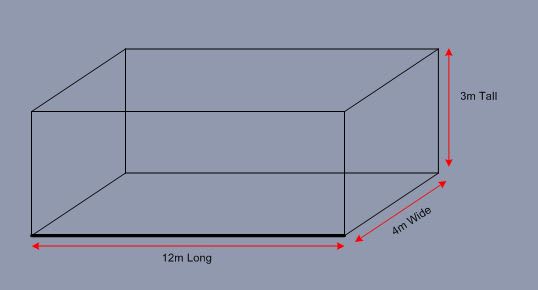MatthewMansfield
Civil/Environmental
- Aug 11, 2012
- 47
Hello all,
I was hoping someone could help me calculate the moment a tank wall experiences.
I have the following question:-
Tank contains water with dimensions:
4m Wide
12m Long
3m Tall
Determine the moment at the bottom of the long side at its centre.
I have drawn a sketch of the tank and highlighted in dark what I believe is the "bottom of the long side"

To calculate the force acting on the wall (12 x 3) I have done the following:-
F = p * g * a * y
p = density of water (1000)
g = gravity (9.81)
a = area (36)
y = distance from the top of the tank to the walls centroid (1.5)
1000 * 9.81 * 36 * 1.5 = 529740 N of force acting on the wall.
I am not really sure where to go from here?
Can anyone help?
I was hoping someone could help me calculate the moment a tank wall experiences.
I have the following question:-
Tank contains water with dimensions:
4m Wide
12m Long
3m Tall
Determine the moment at the bottom of the long side at its centre.
I have drawn a sketch of the tank and highlighted in dark what I believe is the "bottom of the long side"

To calculate the force acting on the wall (12 x 3) I have done the following:-
F = p * g * a * y
p = density of water (1000)
g = gravity (9.81)
a = area (36)
y = distance from the top of the tank to the walls centroid (1.5)
1000 * 9.81 * 36 * 1.5 = 529740 N of force acting on the wall.
I am not really sure where to go from here?
Can anyone help?
